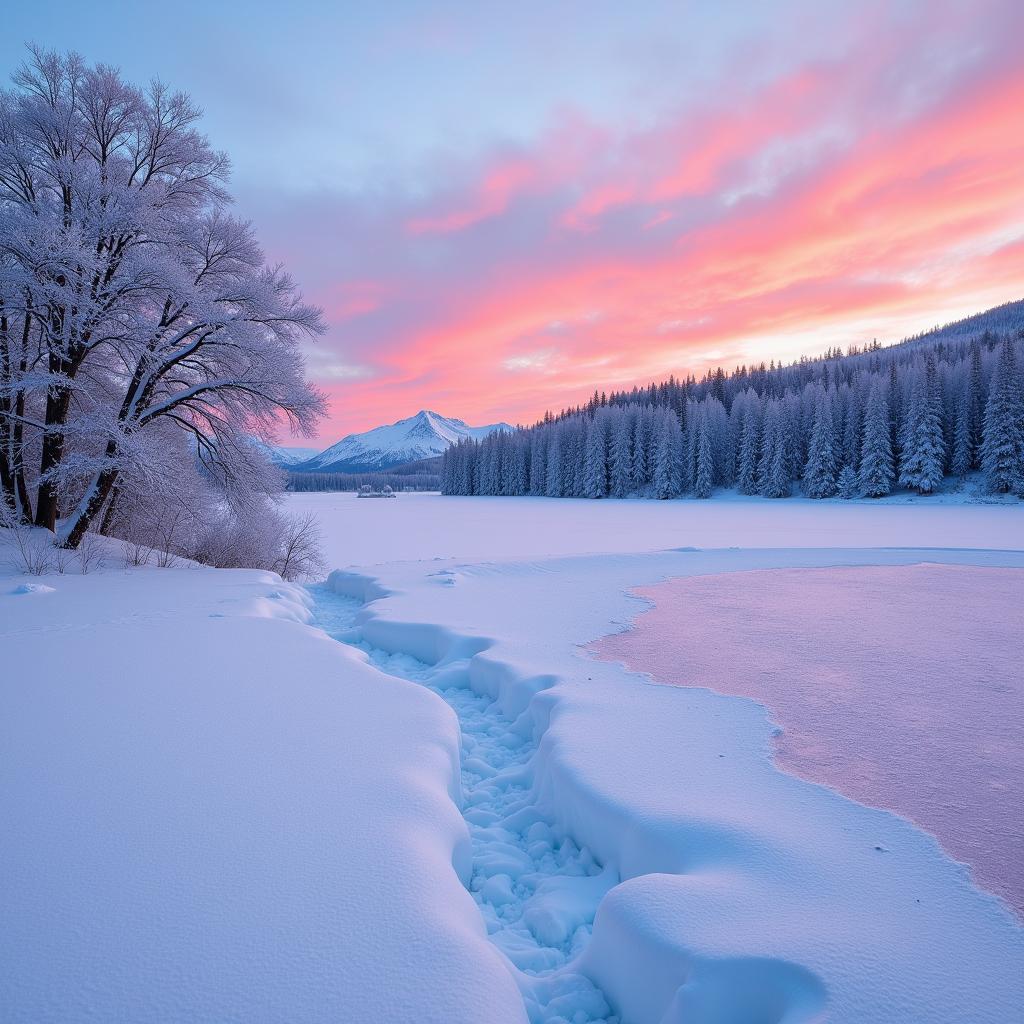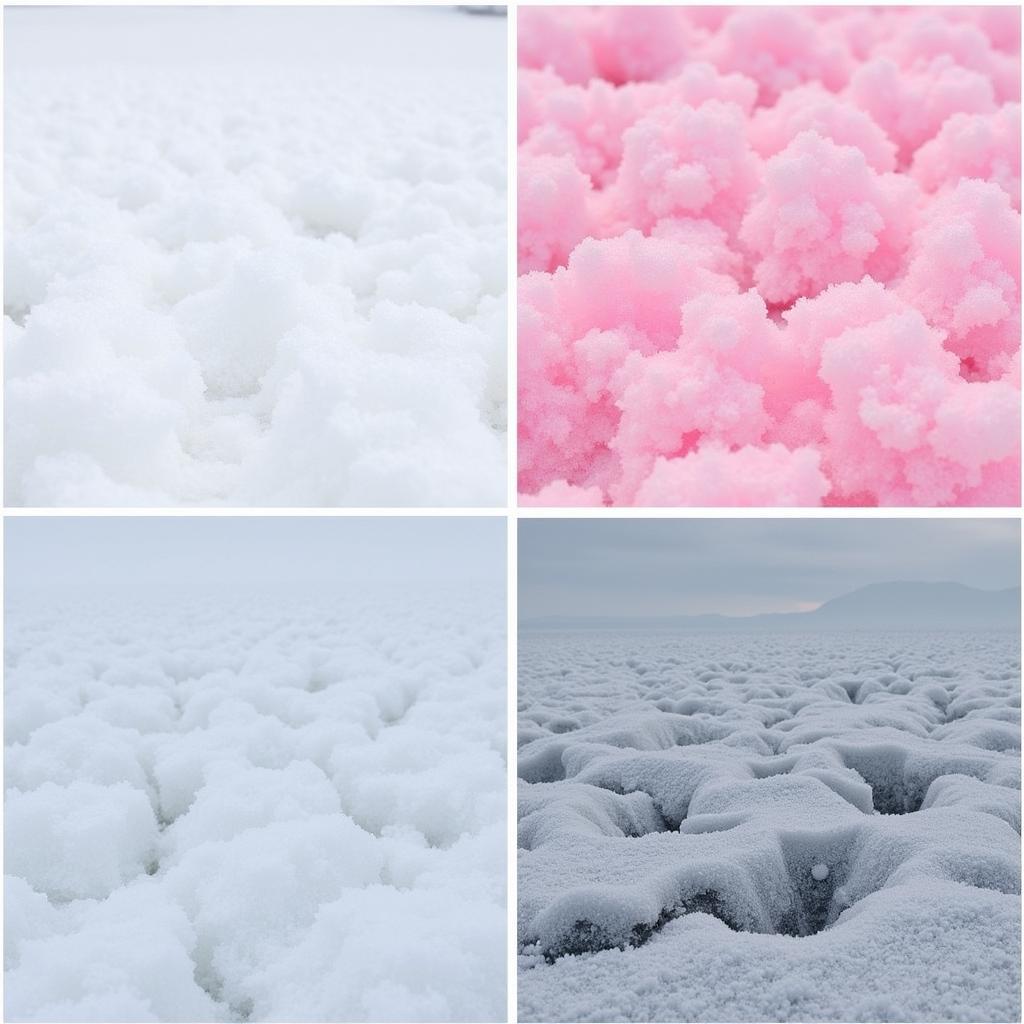Snow, a quintessential symbol of winter, often evokes images of a pristine white landscape. But is snow truly white? The answer is more nuanced than you might think. While we often perceive snow as white, its color can vary depending on several factors. Let’s delve into the science and wonder behind the color of snow.
Unpacking the Science Behind Snow’s Color
The seemingly simple question, “de que color es la nieve?” (what color is snow in Spanish), opens up a fascinating exploration of light, physics, and perception. Snow is composed of countless tiny ice crystals, each with a complex structure. These ice crystals act like miniature prisms, refracting and reflecting light in multiple directions.
When sunlight, which comprises all colors of the visible spectrum, interacts with snow, most of the light is scattered back equally. This equal scattering of all wavelengths is what generally makes us perceive snow as white. However, the story doesn’t end here.
Why Isn’t Snow Perfectly White?
While pure snow appears white, several factors can influence its perceived color. Impurities within the snow, such as dust, algae, or pollutants, can absorb certain wavelengths of light, leading to a slight tint. For instance, snow contaminated with algae can appear reddish or pinkish, a phenomenon sometimes referred to as “watermelon snow.”
Furthermore, the surrounding environment can also impact the color of snow. Shadows cast by trees or buildings can create bluish hues, while the low angle of the sun near sunrise or sunset can give snow a golden or reddish glow.
 Snow Color Variations due to Environmental Factors
Snow Color Variations due to Environmental Factors
The Influence of Depth and Density on Snow’s Appearance
The depth and density of snow also play a crucial role in its color. A thin layer of snow might appear translucent, allowing the color of the ground beneath to show through. Conversely, thick layers of densely packed snow appear brighter white due to multiple reflections within the snowpack. This is similar to how how to color a snowman demonstrates the impact of layering and density on color.
How Perception Plays a Role in the Color of Snow
Our perception of snow’s color can also be influenced by factors like the surrounding lighting conditions and even our individual color vision. What one person perceives as pure white, another might see as slightly bluish or greyish.
Exploring Other Hues of Snow: Beyond White
While white is the most common color associated with snow, it’s not the only hue this frozen precipitation can take on. As mentioned earlier, impurities like algae can tint snow pink or red. Similarly, dust and soot can give snow a grayish or even black appearance, especially in urban areas or near industrial sites. This has points of similarity with how to color a snowman where different materials can influence the perceived color.
 Different Snow Colors Due to Impurities
Different Snow Colors Due to Impurities
Conclusion: Appreciating the Colorful Nuances of Snow
So, de que color es la nieve? While the answer might seem simple at first, the reality is that snow’s color is a complex interplay of physics, environmental factors, and human perception. From the pristine white of fresh snowfall to the subtle tints caused by impurities, understanding the science behind snow’s color allows us to appreciate the diverse beauty of this winter wonder even more.
FAQ
- What is the most common color of snow? White.
- Why does snow sometimes appear blue? Shadows and the scattering of light can create a blue hue.
- Can snow be pink? Yes, algae can tint snow pink or red.
- What makes snow appear gray or black? Dust, soot, and other pollutants can darken snow.
- Does the depth of snow affect its color? Yes, thicker snow appears brighter white due to multiple light reflections.
- Why does snow sometimes look translucent? Thin layers of snow can allow the ground beneath to show through.
- Can snow have different colors at different times of day? Yes, the angle of the sun can influence the color of snow.
For further assistance, please contact us at Phone Number: 0373298888, Email: [email protected] or visit us at 86 Cau Giay, Hanoi. We have a 24/7 customer service team.

